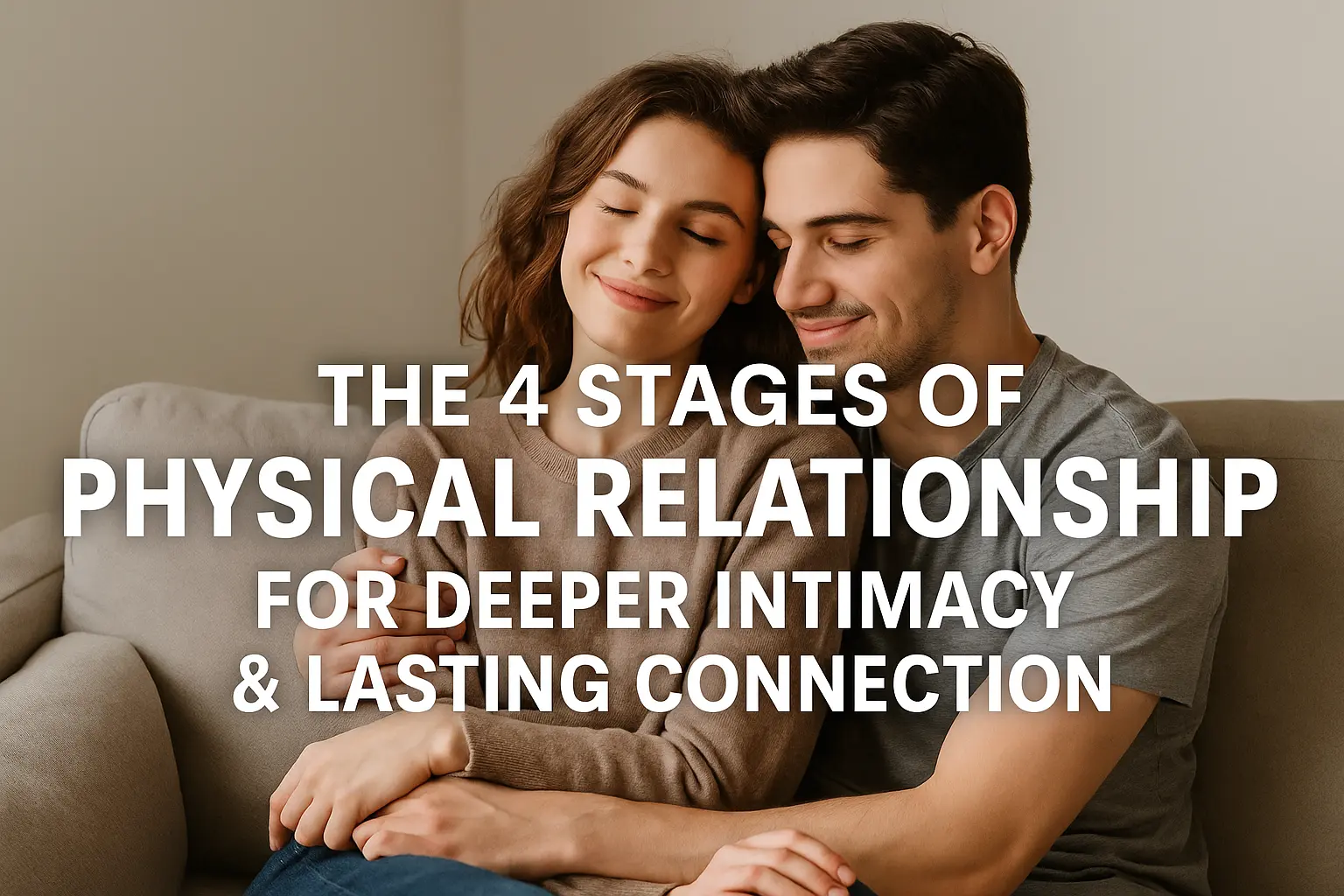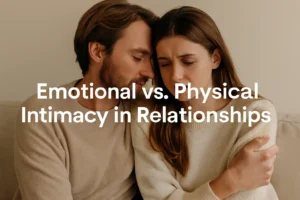Let’s get real for a second. Physical intimacy isn’t just about sex — it’s a layered journey. Whether you’re in a new relationship or have been with your partner for years, understanding the 4 stages of physical relationship can help you connect deeper, love harder, and sustain that spark for the long haul.
I’ve personally noticed in my own relationship that intimacy doesn’t just “happen.” It builds, shifts, sometimes stalls — and then picks up again in beautiful ways. So, if you’re wondering where you and your partner stand or how to level up your connection, this article is for you.
Let’s dive in.
Table of Content
Stage 1: Attraction & Anticipation — That First Spark
Ah, the butterflies stage.
This is where most relationships begin — when physical attraction is high and curiosity fuels everything. You’re not just drawn to their looks, but to their energy. It’s those stolen glances, light touches, and the way your body reacts just by being near them.
But here’s the thing: while the first stage of a physical relationship feels magical, it’s also fragile. It’s easy to confuse lust with love at this point. And that’s okay — we’re human.
During this stage, touch is often playful: hand-holding, brushing hair away, a quick kiss. It’s about exploration — not just physically, but emotionally, too.
Pro tip: Don’t rush. The anticipation is part of the pleasure.
Stage 2: Comfort & Exploration — Building Trust Through Touch
This is where things start to deepen.
You’ve moved past the initial rush, and now physical intimacy becomes more intentional. You start learning what your partner likes, what makes them feel safe, and where your desires align (or don’t).
This stage often includes deeper physical experiences: longer kisses, cuddling that leads to more, and finally, sex — if and when both partners feel ready. But more importantly, it’s about communicating physical needs without judgment.
It’s also the stage where issues can pop up if expectations aren’t aligned. One partner may want more physical touch, while the other needs emotional safety first.
👉 Related read: Multisensory Integration in Sex – this post goes deep into how tuning into all senses can radically increase intimacy at this stage.
Stage 3: Intimacy & Synchronization — When It Just Feels Natural
If you’ve reached this point, you’re not just having sex — you’re making love in a way that resonates with both of you. There’s flow, rhythm, and a deep sense of knowing each other’s bodies.
You’re attuned to subtle cues — a shift in breath, a change in pace — and you respond without thinking. This is where the physical connection and emotional bond begin to synchronize.
In my own experience, this stage has been the most beautiful — but it also requires effort to maintain. Routine can dull intimacy if you’re not careful.
Try new things. Explore fantasies. Communicate openly. And remember: foreplay doesn’t start in the bedroom — it starts with how you treat each other all day long.
Also read: What Is a Healthy Sexual Relationship? — for insights on emotional safety and healthy boundaries.
Stage 4: Deep Bonding or Disconnect — The Crossroads Stage
This is where many long-term couples find themselves — sometimes without even realizing it.
After months or years together, physical intimacy can either deepen into profound closeness… or fade into disconnect. The comfort of routine can become a trap if you’re not intentional.
But it doesn’t have to.
This final stage of the 4 stages of physical relationship is really a choice. It’s the point where you either grow together or drift apart. If you’ve nurtured emotional intimacy along the way, your physical bond will reflect that.
That said, some couples experience dips in desire due to stress, aging, parenting, or even unresolved conflict. Totally normal — but not permanent.
Want to reignite that spark? Here’s a must-read: How to Sustain Desire in Long-Term Relationships
What Happens After the 4 Stages?
Relationships are fluid. You don’t just stop at stage 4 and stay there. You cycle back, fall into new rhythms, and rediscover each other over and over again.
Sometimes you’ll feel stuck in Stage 2. Other times, you’ll have a weekend that reminds you of Stage 1. That’s the beauty of love — it evolves with you.
The key is awareness. When you understand where you are in your physical relationship journey, you can show up better for your partner — and for yourself.
Final Thoughts
Understanding the 4 stages of physical relationship isn’t about labeling or boxing in your love life. It’s about learning the rhythm of closeness — how attraction turns to affection, and how physical touch becomes a language all its own.
It’s not always smooth. But with curiosity, care, and communication, each stage becomes a stepping stone toward deeper connection.
FAQs About the 4 Stages of Physical Relationship
1. What are the 4 stages of physical relationship?
The four stages include:
Attraction & Anticipation
Comfort & Exploration
Intimacy & Synchronization
Deep Bonding or Disconnect
Each stage builds on emotional trust, physical touch, and mutual understanding.
2. Do all couples go through these stages?
Most do — though the timing and depth of each stage can vary. Some couples may move quickly; others slowly. Some repeat stages or skip one entirely.
3. What if we’re stuck in stage 2?
That’s common! Focus on emotional safety, open communication, and try exploring new ways to connect. This article on healthy sexual relationships can help.
4. Can we go back to stage 1 excitement?
Absolutely. While you can’t recreate the “new” feeling exactly, you can reignite curiosity and playfulness. Revisit old date spots, try new things in bed, or just flirt more during the day.
5. Where can I learn more about these stages?
A helpful resource is this psychologist-backed article on the four stages of relationships. It’s insightful and grounded in real research.
No matter where you are in your journey, recognizing the 4 stages of physical relationship can give you the clarity and confidence to build something truly meaningful. It’s not about perfection — it’s about progress, presence, and choosing each other every step of the way. When you understand the stages, you don’t just “go through the motions” — you grow through them.




